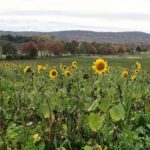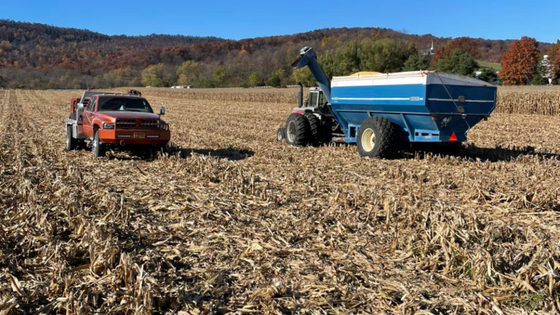 Most folks know that Maryland’s state bird is the Baltimore Oriole or that our state flower is the Black-Eyed Susan. But, did you know that Maryland has a state soil? It’s called Sassafras and it covers nearly 500,000 acres in southern, central and eastern regions of the state.
Most folks know that Maryland’s state bird is the Baltimore Oriole or that our state flower is the Black-Eyed Susan. But, did you know that Maryland has a state soil? It’s called Sassafras and it covers nearly 500,000 acres in southern, central and eastern regions of the state.
What we also know about our state is that as you travel from west to east, our landscape is quite diverse. Natural features range from the hillier and more clay-ridden west to the flat and sandy Eastern Shore.
“We farm a variety of different types of ground. Some ground rolls with clay knolls. Other ground is clay-loam based soil and is fairly flat with random limestone outcroppings. We also farm some river bottom ground that is sandy loam,” says Joshua Ernst of Ernst Grain & Livestock in Washington County. Joshua grows corn, soybeans, wheat, barley, a variety of cover crops, hay, sheep and hogs.
In the Eastern Shore’s Somerset County, Wimberly Farms deals with a different soil type, as that county sits on the Chesapeake Bay. “We have flat, small fields with a lot of ditches and sandy soil,” says Kevin Anderson of Wimberly Farms. Even with the soil differences, Kevin grows many of the same crops as Joshua — corn, soybeans, wheat and barley.
According to the University of Maryland Extension, nearly all soils in Maryland contain a combination of sand, silt and clay particles. Soil texture is determined by the relative amounts of these three types of particles and doesn’t change over time. The state can be broken up into three soil categories: Appalachian Mountains, Piedmont Plateau and Coastal Plain. A lot of soil diversity exists within these regions. In general, mountain soils tend to be rockier and steeper, the Piedmont Plateau tends to be gently hilly with many small streams and a loamy soil texture, and the Coastal Plain tends to be marshy with patches of sand texture and patches of clay texture.
Maryland farmers follow farming practices to improve soil health. “We utilize multi-species cover crops with green planting methods to improve our soil conditions. All of our fields are planted in some type of cover crop prior to the winter season,” Joshua says. “It’s our goal to increase organic matter, prevent erosion, develop soil microbiology, and increase the overall health of the soil through this practice. We also use other best management practices like crop rotations, no-till cropping, riparian buffers, soil sampling and plant tissue sampling to maintain soil health.”
And, it’s not only farmers who want healthy soil. You can take a sample of your own yard to test the soil before planting a garden, trees or shrubs. A soil test can provide a baseline on soil pH, nutrient levels and more and give recommendations for a healthy growing environment in your own backyard.
Hungry for more? Read about other farming practices. Learn more about soil. Try this fun soil activity.
Sign up for our newsletter and find us on Facebook, Twitter and Instagram.


I didn’t know this.I mean I knew about the different areas but not the different types of soil. .I found this very interesting so thank you.
Amen my father and mother were Maryland dairy farmers. Very hard workers. Rest In Peace, love you and miss you.
My father and mother were Maryland dairy farmers in Cecil County. Hard workers. Love and miss you, ❤️